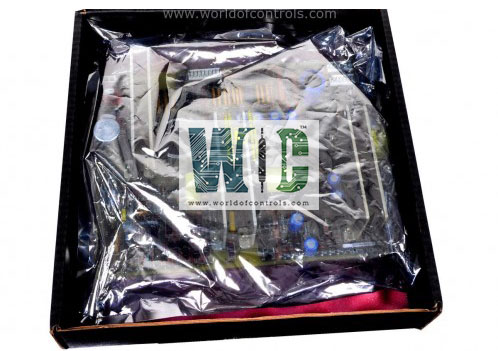
World Of Controls understands the criticality of your requirement and works towards reducing the lead time as much as possible.
IS230TNTCH1B - Thermocouple Input Assembly is available in stock which ships the same day.
IS230TNTCH1B - Thermocouple Input Assembly comes in UNUSED as well as REBUILT condition.
To avail our best deals for IS230TNTCH1B - Thermocouple Input Assembly, contact us and we will get back to you within 24 hours.
Part Number: IS230TNTCH1B
Manufacturer: General Electric
Series: Mark VIe
Function: Thermocouple Input Assembly
Availability: In Stock
Country of Manufacture: United States (USA)
IS230TNTCH1B is a Thermocouple Input Assembly manufactured and designed by General Electric. It is a part of the Mark VIe Control System. The assembly consists of the TBTCH1B terminal board and three PTCCH1B packs. The TBTCH1B terminal board serves as the central hub for connecting the thermocouple inputs, providing a convenient and organized interface. It is designed to accommodate up to 24 thermocouple inputs, enabling the monitoring of multiple temperature points within the system. Each PTCCH1B pack is responsible for the conditioning and digitization of the thermocouple signals. These packs are specifically designed to ensure accurate and reliable temperature measurement. They incorporate precision circuitry that amplifies, linearizes, and compensates for cold junction temperature variations. The conditioning process ensures that the thermocouple signals are transformed into digital data that can be effectively processed by the control system. The TBTCH1B terminal board and PTCCH1B packs are engineered to provide robust and accurate thermocouple input capabilities. They can handle various thermocouple types, such as Type K, Type J, Type T, etc., allowing for flexibility in temperature measurement across a wide range of applications.
WOC is happy to assist you with any of your automation requirements. For pricing and availability on any parts and repairs contact us.
What is IS230TNTCH1B?
It is a Thermocouple Input Assembly manufactured and designed by General Electric
What happens if a fault is detected in the cold junction?
If a fault is detected in the cold junction, the system switches to the backup value. The backup value can be derived from CJ readings on other terminal boards within the system. Alternatively, it can be a pre-configured default value that has been set based on system requirements and specifications.
How is the backup value determined in case of a cold junction fault?
The backup value is derived either from CJ readings on other terminal boards or is a pre-configured default value. In cases where multiple terminal boards are present, the system can utilize readings from other CJ points to determine the backup value. This ensures that temperature measurement and control can continue seamlessly, even in the presence of a CJ fault.
What is the purpose of the backup value in the event of a CJ fault?
The backup value is used to ensure continuity of temperature measurement and control when a CJ fault occurs. By switching to the backup value, the system can still make reliable temperature calculations and adjustments, minimizing any disruption or impact caused by the CJ fault.